The state of HR in 2024 is, unfortunately, not very promising: 53% of HR pros predict that the recruitment budgets this year will stay the same or decrease, and 79% of them believe that AI will soon be in charge of hiring and firing decisions.
As a result, more than 90% of hiring managers face challenges with recruiting new talent. As champions of fair, streamlined hiring processes, we’ve taken the time to explore some of those challenges in an effort to find ways that you can overcome them.
TL;DR — Key Takeaways
Avoiding recruiting challenges helps avoid high turnover, fill roles more quickly, and have fewer skills gaps, ultimately resulting in happier candidates.
Attracting qualified talent and building a strong employer brand are two of the most challenging aspects of hiring for companies today.
Companies should aim to attract passive candidates, all the while preventing the ones who started the application from dropping off. Work to remove hiring bias via skills testing to ensure a fair talent acquisition process.
By personalizing the communication with candidates and reducing the time to hire, you’ll save time and have happier applicants, not to mention reducing the hiring costs.
The importance of avoiding common recruitment challenges
The challenges we’re about to describe can affect many different parts of your recruiting process. From finding suitable candidates to retaining quality talent in your team, the past few years have been rough, and the future of the recruitment industry is also looking somewhat grim.
For example:
53% of employees in one LinkedIn study said they planned to leave their current company in 2024
The same research stated that 77% of employers struggled to fill their open positions with the right talent
44% of new hires have some type of skills gap, meaning that nearly half of the potential employees you want to hire need to go through some upskilling before they’re fully productive
These are just some things the average recruiter faces if they don’t solve the company’s challenges related to recruiting in time. Well, here are the challenges most companies face and how to avoid them.
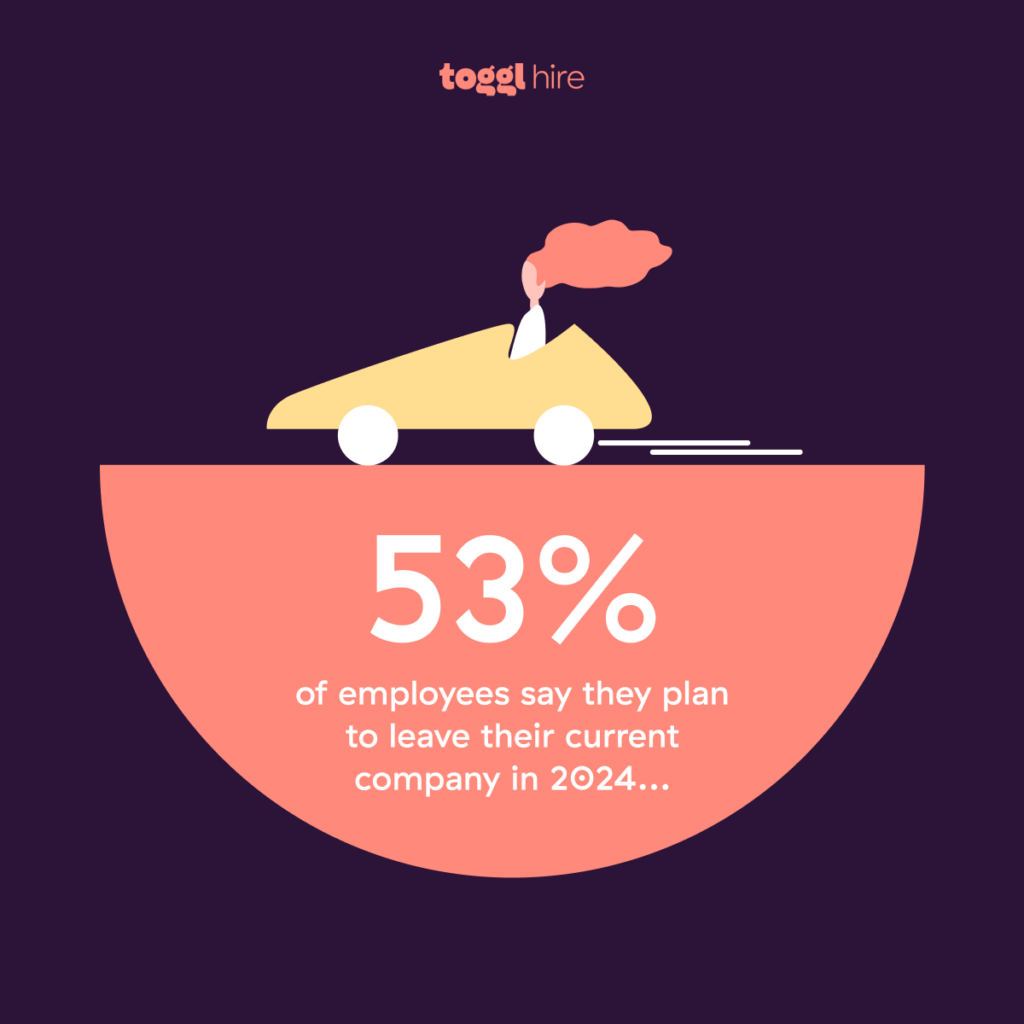
13 biggest recruiting challenges (and how to avoid or overcome them)
Before we get started, we just want to clarify that if you’re struggling with some or all of these issues in your talent acquisition process, don’t worry.
You’re definitely not alone, and these problems are both normal and easy to fix. Beware, though, as you don’t want to be complacent and let these issues go from a snowball to an avalanche.
1. Attracting qualified candidates
As mentioned above, 77% of employers struggle with finding qualified candidates. It usually comes down to what you’re willing to compromise on, as it’s virtually impossible to find someone who has the right mix of necessary hard and soft skills, as well as alignment with your mission, vision, values, and company culture.
💡 Solution
There are many ways to attract top talent in today’s job market. First, you can try optimizing your job ads for SEO, specifically on your website and career page. Find out what terms get the most searches and hire a specialist to optimize the page with the right keywords and copy.
The next best thing you can do for your recruitment process is to go social. 73% of millennials found their jobs through social in the last year. And since potential employees use your social media platforms to vet you as an employer, it makes sense to invest in this channel.
Then, clearly communicate the requirements and the expectations in a role so that qualified candidates know what they’re getting into before hitting “apply.” In other words, list the salary, guide them through your talent acquisition process, and be transparent about what they can expect if they get the job.
2. Building a strong employer brand
75% of candidates consider a company’s employer brand before applying for a job. Neglecting your employer brand can have far-reaching consequences on talent acquisition. Simply put, top talent won’t consider your business as a good place to work. It’s the first impression that counts, and you’re in charge.

💡 Solution
The potential employee needs to become interested not only in the job but in you as the employer, too. To build that interest, you can start by highlighting employee testimonials. For example, source written quotes or create employee-centered content on your social channels.
If you want the best talent to apply for your openings, it’s also important to make it easy for them to apply! Skip the cover letters, and don’t make them fill out applications if a LinkedIn integration is available in your applicant tracking system. In general, find ways to streamline the process entirely.
3. Reaching passive candidates
70% of the workforce today is made up of passive candidates — people who aren’t actively looking for a new job, but they just might listen to the right offer. By tapping into the passive candidate pool, you stand a chance of getting top talent in your recruiting process.
💡 Solution
You might think that going after passive candidates as a talent acquisition strategy is essentially poaching good people, but it’s far more nuanced than that.
To reach these candidates, attend relevant industry events where you can meet great leaders and speakers in your industry or niche. Or, you might try using specialized recruiters or agencies that work in that same industry to see if they know of any great talent.
Alternatively, you can reach out to passive candidates who may be interested via LinkedIn InMail, but remember to personalize the message and explain why you’re reaching out. Otherwise, it’s helpful to use hiring software that recommends people who fit your hiring needs.
Tip: If you have a Toggl Hire account, you can get a lot of good use out of our candidate recommendation feature, where we match you with candidates who have taken our tests before and achieved high scores. Contact them if you’re interested, or leave them in your talent pool for future roles.
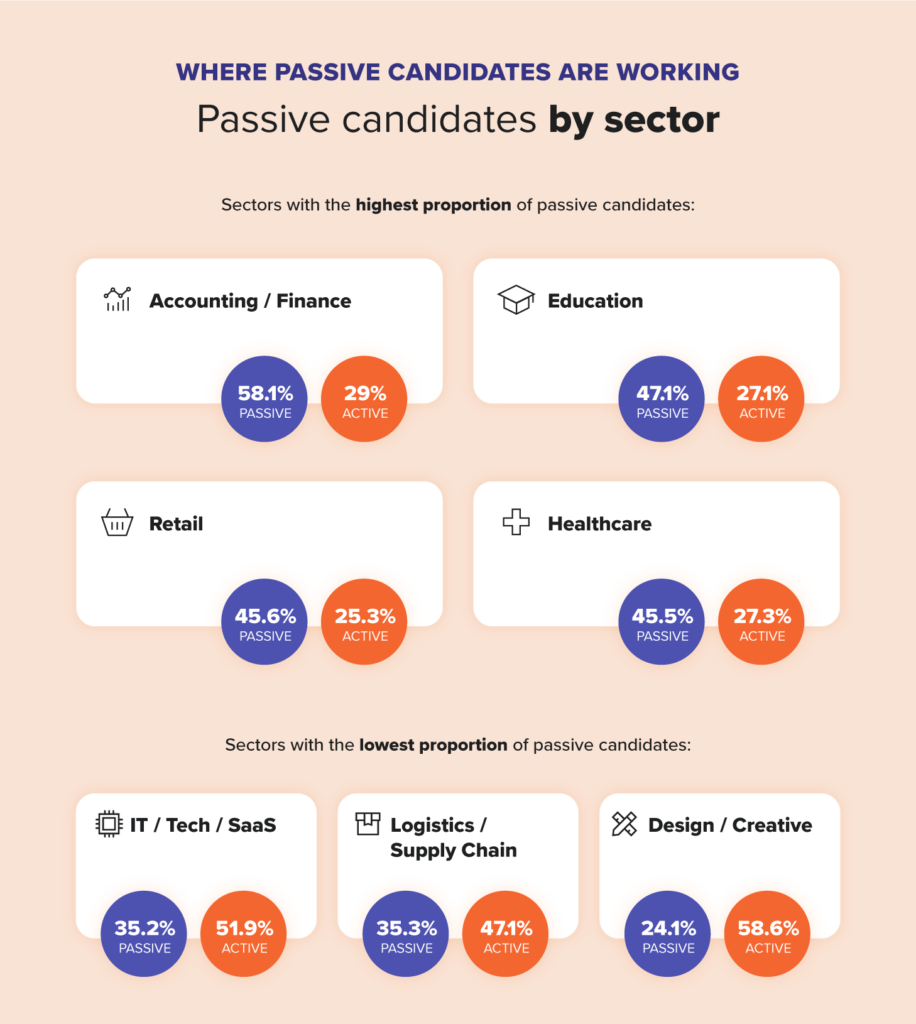
4. Reducing candidate dropoff
92% of candidates who start their job applications don’t finish them, which is a serious issue for any talent acquisition process.
From having a complex applicant tracking system that requires applicants to make an account to employers requiring cover letters and custom-tailored resumes, there are many factors to blame for this number. However, identifying the reason is only the first step. To fix it, implement these tips…
💡 Solution
Streamline the application process and remove all unnecessary steps. According to the study mentioned above, the average application takes just under five minutes and requires a whopping 51 clicks. When you’re finished creating an application for your job opening, go through it yourself and see how you feel after completing it.
Consider using software such as Toggl Hire that puts short skills tests as the first step of the talent acquisition process. Candidates immediately know if they’re a good fit or not, and they get timely communication about their application. Aside from making the process more engaging, skills assessments strengthen your employer brand and lead to better hiring decisions.

5. Eliminating hiring bias
89% of hiring managers make judgments about applicants within the first 15 minutes of an interview. While somewhat part of human nature, conscious and unconscious biases are not only illegal but also lead to poor hiring decisions.
💡 Solution
Ensure your interviews are well structured and that every candidate goes through the same interview process. Perform blind resume reviews to look at talent without being able to see any information related to their ethnicity, color of skin, background, and more.
Use AI tools such as Textio to help create job descriptions that are neutral and encourage the right talent to apply.

Last but not least, use candidate assessment tools like Toggl Hire that put skills at the forefront of your talent acquisition efforts. That way, before you even see someone’s name and location, you’ll see what matters most—their skills.
6. Accurately assessing candidate skills
Even the most sophisticated applicant tracking system won’t tell you if someone has the skills they claim to have on their LinkedIn profile and resume. And even if they have the skills, can they apply them and solve real problems in your business?
Being able to accurately assess candidate skills helps you find the right match early on so you don’t wait until the final interview to find out that someone is a bad fit for your workforce.
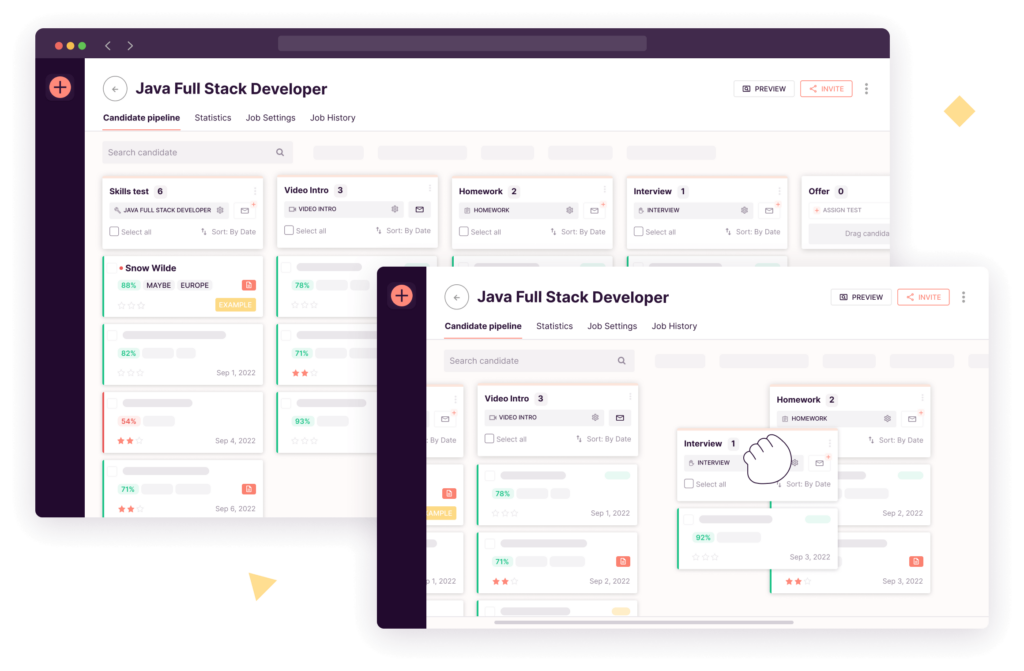
💡 Solution
Use skills assessment tools like Toggl Hire to test the hard and soft skills of candidates as the first step of the recruitment process. Grab pre-built test templates from our library or build a skills test from scratch using one of our thousands of expert created and reviewed questions.
7. Personalizing candidate communication
54% of candidates abandon the recruitment process due to poor communication from the recruiter. Timely communication is a common challenge that companies face but also something that is relatively easy to fix.
As candidates invest hours into applying, the least you can do for them is personalize the communication. If you struggle to find the time to do that, follow these tips.
💡 Solution
Some parts of the talent acquisition process can be automated with AI and personalization tools while still leaving room for personal interactions.
For example, you can create different templates for communicating with candidates based on their test performance. Toggl Hire does this by providing you wit several email templates and allowing you to set triggers for when these emails go out.
8. Reducing the time to hire
The average time to hire across industries was 44 days in 2023, making reducing that time one of the biggest challenges that companies face because the best talent is only in the market for a short period.
Why fix this? Having a long recruitment process is one of the main reasons why candidates accept other offers or just don’t view you as a serious employer.
💡 Solution
Set clear hiring timelines: when the job applications come in, when they will be reviewed, and when candidates will hear back. Use all the capabilities of your applicant tracking system to reject bad hires quickly and efficiently but in a personalized manner.
Empower your hiring managers to make important hiring decisions so that good applicants get all the attention — and not the bad-fit ones. And as a result, your time to fill and time to hire improve.
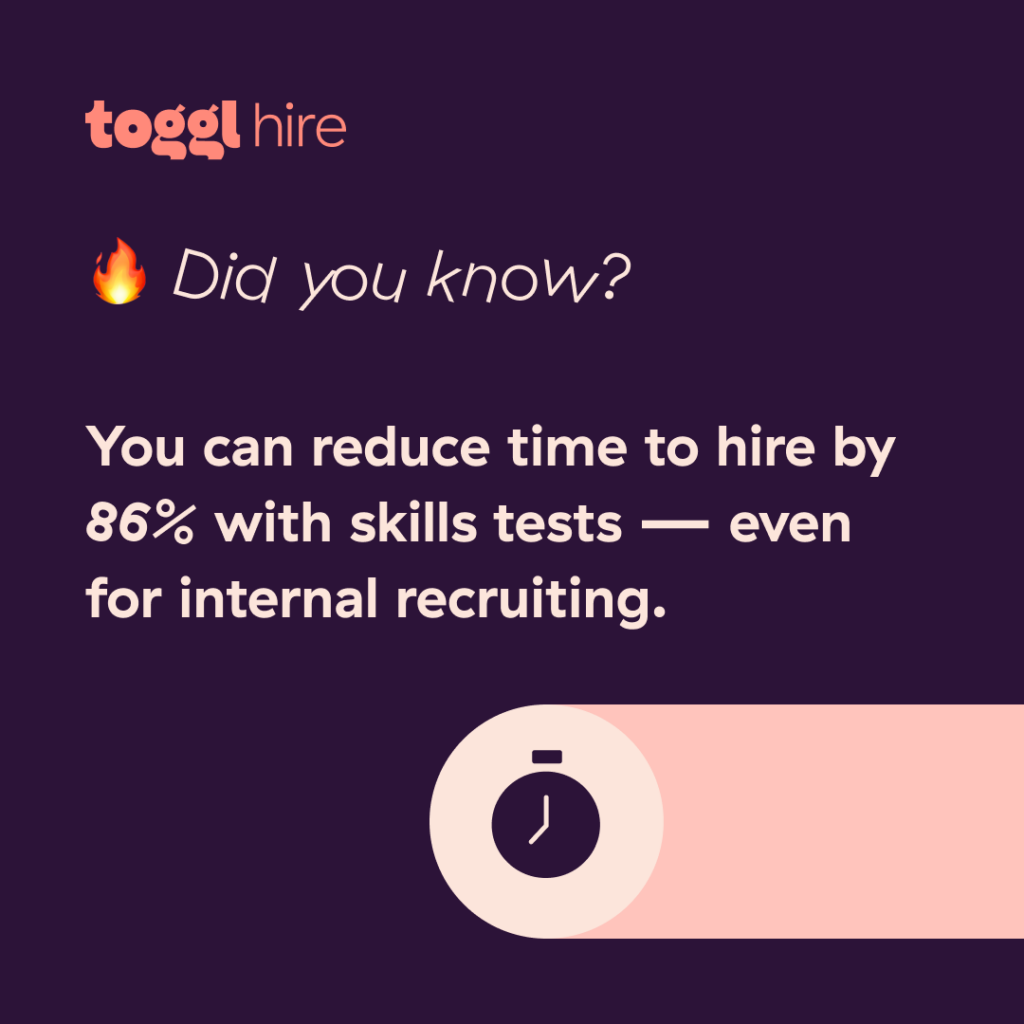
9. Reducing hiring costs
The average cost of hire in 2023 was just over $4,700 per employee. The bill can tally up quickly once you factor in the cost of placement on job boards, promotions on social media, screening and interviewing candidates, doing background research, and more. And if you make the wrong hire, you have to go through it all again and pay even more to rehire (ugh, we can hear the groans now).
💡 Solution
There are many ways to reduce your hiring costs. First, you could promote internally or build referral programs to help get better candidates for less money. Depending on the role, you could also promote internally, as long as moving your top performers into the open role won’t cause disruption to their current team.
You can also power up your talent acquisition with modern hiring tools like Toggl Hire. By identifying the best applicants early on, you’ll save precious resources on screening and interviewing candidates that won’t work out.
10. Inconsistent training for hiring managers
When hiring managers don’t have adequate training that is up to date, companies face challenging situations that often lead to increased costs, bad hires, and damaged reputations. For example, following unfair practices, making the wrong hiring decisions, not following the latest data in the ATS, and similar issues.
💡 Solution
Provide regular training sessions for all of your HR team members. Get up-to-date information on the latest DEI best practices, as well as legal compliance rules. To top it off, introduce a standardized approach to sourcing, interviewing, and hiring in general.
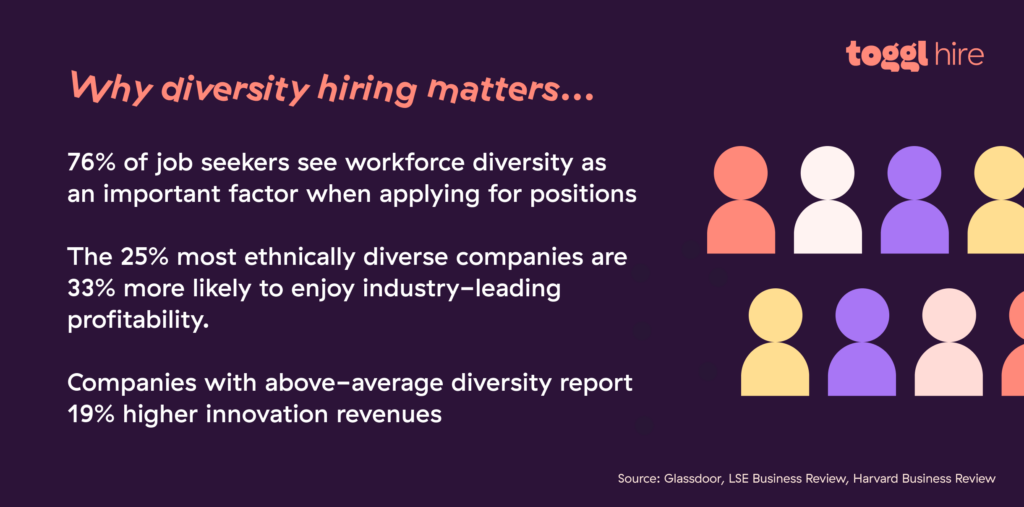
11. Engaging in data-driven recruitment
Technology allows companies nowadays to make hiring decisions based on data instead of gut feeling. You no longer have to hire the person with the best resume and hope that things work out. Instead, you can use hiring tools to make data-based decisions.
💡 Solution
Throughout your recruiting process, analyze and measure your key HR metrics to inform your hiring strategy before you make an offer.
For example, Toggl Hire can help you find the best performer minutes after applying. They take the test, see their results, and select the candidates for the next round with confidence.
12. Improving the candidate experience
Poor candidate experience can ruin the best hiring process for the most amazing role with a superb salary. And in 2024, the candidate experience is more important than ever before.
Research shows that candidates value a variety of things when applying for a job, from understanding how to follow up on an application, being able to find information on culture and benefits, and knowing whom to turn to for help in the recruitment process.
💡 Solution
There are countless ways to improve the candidate experience, but start with communicating clearly and showing respect for your candidates and their time.
Give constructive feedback and, whenever possible, explain why a candidate is not moving to the next hiring round. With Toggl Hire, you can do this automatically and send email updates when someone moves to the next round (or not).
Collect feedback from the candidates on how to improve your existing recruitment process every step of the way. Then, actually implement that feedback.
13. Assessing remote work readiness
The rise of remote work and the gig economy means that, more than ever, people aren’t in the same place when they work together. This can lead to social isolation, among many other issues, and you need to ensure that the candidate you’re hiring is ready for remote work if that’s your company’s setup.
💡 Solution
Hiring tools like Toggl Hire let you perform simple assessments for soft skills such as communication, collaboration, empathy, active listening, and other key skills for remote work.
Improve your recruitment process with Toggl Hire
At this point, you may see a common thread in all of the challenges faced by companies today. Processes need to be more efficient, accurate, inclusive, and personalized. This leads to better candidate experience, lower hiring costs, and better hiring decisions.
With Toggl Hire, you can solve many of these issues at once.
Reduce your time to hire: by automating the initial part of the hiring process and eliminating the least qualified candidates.
Improve candidate experience: give feedback rapidly and make the process more transparent.
Eliminate hiring bias: focus on the data for each employee, not first impressions.
Engage passive candidates: instead of wooing them with lengthy offers, present them with a challenge and test their skills.
Almost all of the biggest recruiting challenges today can be solved by adding the right tools to your recruitment process and making it more efficient, fair, and data-driven.
Start today by creating a free Toggl Hire account to see just how the right hiring software can help you improve your recruiting process.

Mile is a B2B content marketer specializing in HR, martech and data analytics. Ask him about thoughts on reducing hiring bias, the role of AI in modern recruitment, or how to immediately spot red flags in a job ad.










